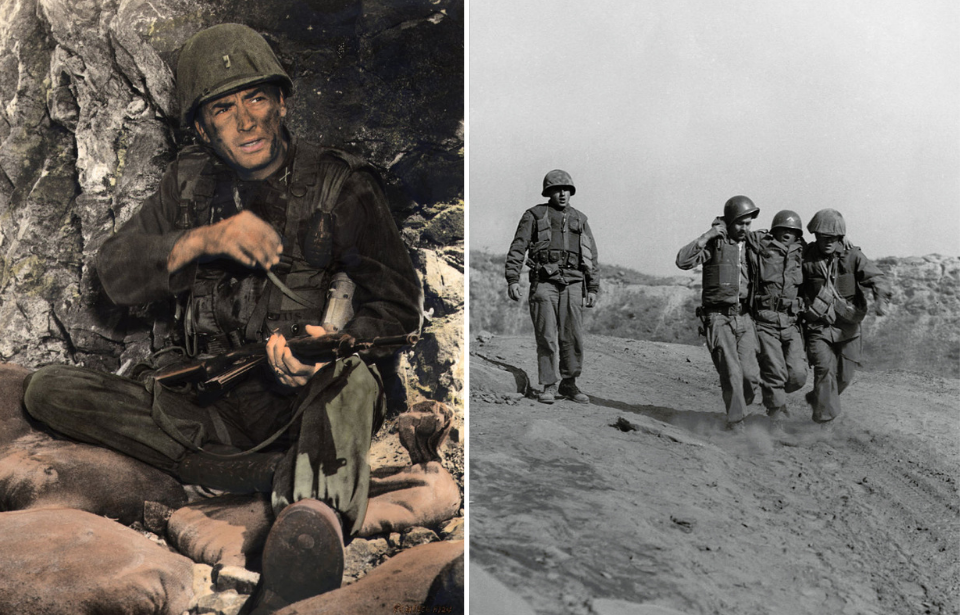The Battle of Pork Chop Hill was a series of two battles during the spring and summer of 1953. They occurred while the United Nations, North Korea and China were working on the Korean Armistice Agreement. While those forces under the UN command won the first battle, the second was lost to the People’s Volunteer Army (PVA) of China.
A divisive position on the Korean front
The Battle of Pork Chop Hill was the result of the Battle of the Outposts, which ran from July 1951 until the armistice was signed on July 1953. During this time, the Korean War was largely at a stalemate, with engagements consisting of battalions and regiments that were limited in scope.
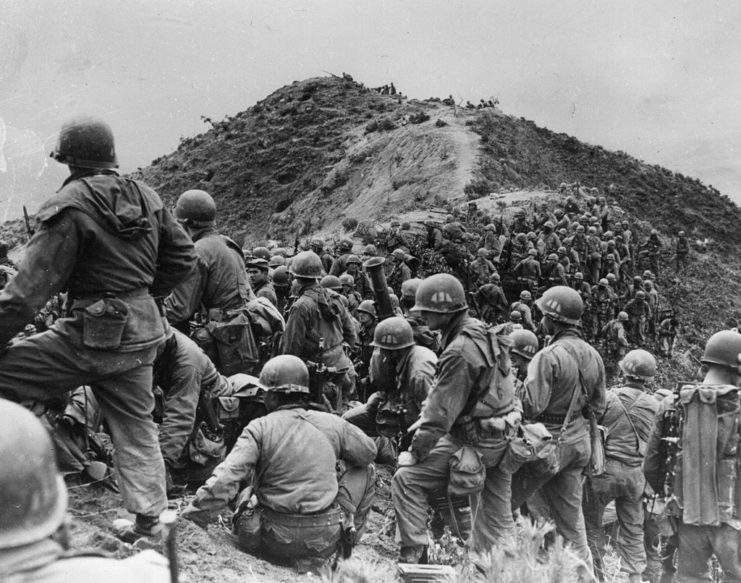
In the lead-up to the battle, Pork Chop Hill, known as Hill 255, was under the control of different US regiments. In December 1952, it fell under the US 7th Division’s defensive sector, who were protecting it when the PVA launched an attack a few months later.
Two different PVA forces were involved: the 67th Division of the 23rd Army and the 141st Division of the 47th Army. They were made up of veteran units well-trained in night assaults, mountain warfare and ambush attacks. Commanded by General Deng Hau of the 13th Field Army, they went into battle without much weaponry, having been trained to use those dropped by their enemies.
The attack on Old Baldy foreshadows the events at Pork Chop Hill
On March 23, 1953, in a precursor of what was to come, a battalion of the PVA 423rd Regiment, 141st Division launched a surprise attack on Old Baldy – also known as Hill 266. They struck while C Company, 31st Infantry Regiment’s Colombian Battalion was relieving B Company, and seized the outpost.
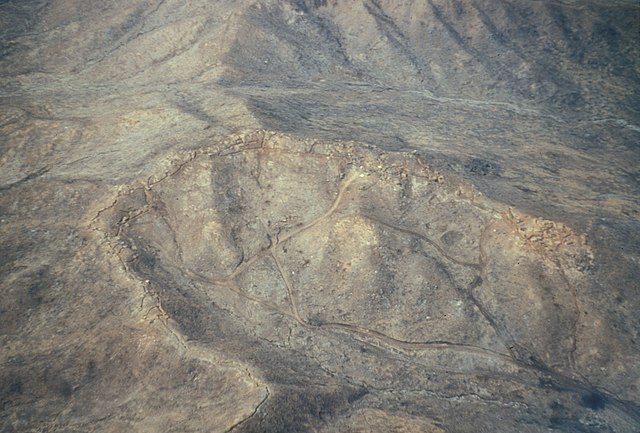
Despite two days of counterattacks, B and C Companies were unable to retake Old Baldy, largely due to the 31st Regiment command’s failure to send reinforcements. This led the UN to order its abandonment, exposing Pork Chop Hill to a three-sided attack and nightly PVA patrols.
April 16 – 18, 1953: The first battle
Despite negotiations for an armistice, the Chinese launched an attack to show they were still willing to fight. It occurred the night of April 16, 1953, while E Company, 31st Infantry was manning Pork Chop Hill. They planned to advance on the trenches, cut US defenses in half, and advance on the command post. From there, they would seize the second crest, while two other units penetrated the rear and took the evacuation landing zone.
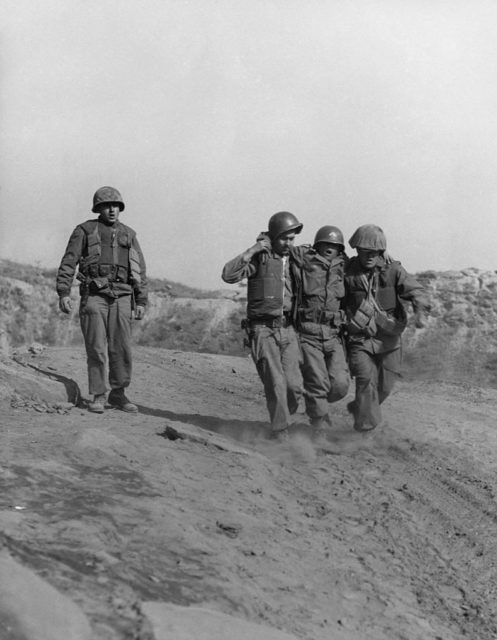
The PVA troops went into the assault with hand grenades, bazookas, automatic weapons, flamethrowers, and satchel charges. They quickly outnumbered A Company and applied pressure to other units.
On April 17, K and L Companies, 31st Infantry, were ordered to launch a counterattack. They struck at 4:30 A.M., and by dawn had reached the main trenches atop Pork Chop Hill. Reinforcements were requested, and G Company linked up with K Company around 8:30 A.M. The three companies worked together to drive PVA troops out of the trenches.
Unfortunately, miscommunication resulted in Division headquarters not realizing the extent of the fighting and casualties. By the time the situation was clarified, the companies were down to a combined 25 survivors. F Company, 17th Infantry was sent in to relieve them, and reached the trenches around 10:00 P.M. E Company was then sent in as reinforcements.
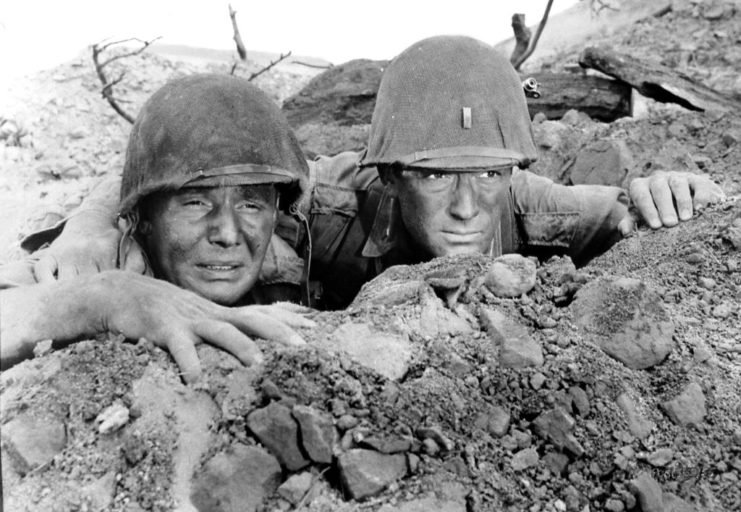
In the early hours of April 18, the PVA 201st Regiment renewed its attack, nearly overrunning F Company. The assault was stopped by a counterattack from E Company, which caught the Chinese by surprise. While the PVA launched another attack, the Americans defeated them and secured the hill.
Casualties and rebuilding
While the US secured a win, both sides suffered casualties, largely due to how hazardous it was to evacuate the injured.
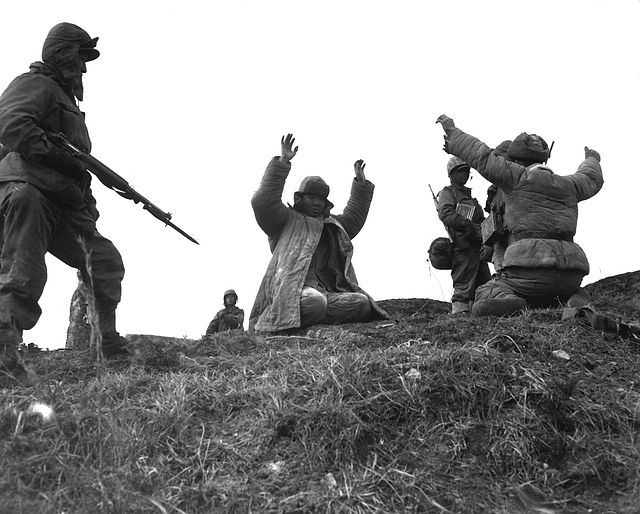
Throughout May and June 1953, the 7th Division rebuilt the defenses of Pork Chop Hill. American engineers were brought in to reinforce the bunkers and strengthen the trench system. While this was happening, the UN continued to hold its defensive stance along the Main Line of Resistance.
July 6 – 11, 1953: The second battle
In an almost identical surprise assault, the PVA attacked Pork Chop Hill on July 6, 1953. A Company was quickly surrounded. B Company was ordered to assist, and Division headquarters ordered a third company to enter the battle.
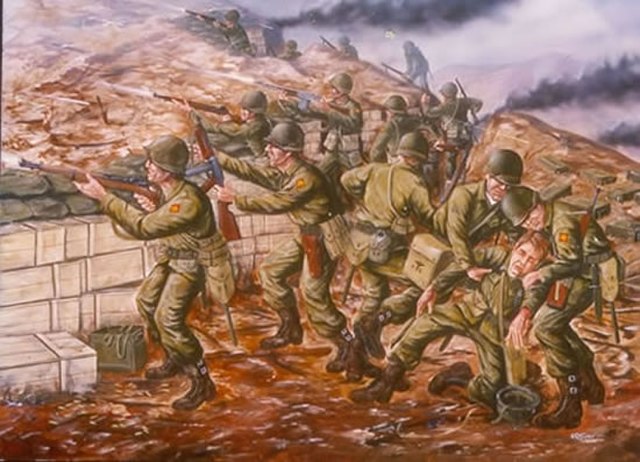
Artillery rained down while B Company attempted to reach A Company. They did so in the early hours of July 7, clearing bunkers of PVA troops along the way. By 4:00 A.M., the first platoon from E Company arrived and kept control until the evening, when the PVA launched another attack.
Taking a leaf from their enemy’s book, the US forces waited until night to launch a counterattack. However, the Chinese attacked nearby Hill 200 at dusk as a diversion. As F Company moved up the hill, the Chinese infiltrated American positions on Pork Chop Hill. This resulted in F Company being ordered to seize Pork Chop Hill’s crest. They were eventually sent to fight in the evacuation landing zone.
Units launched a counterattack against the PVA on June 8, and by mid-afternoon G Company moved downward from Hill 200, toward the slope of Pork Chop Hill and attacked the west. By this point, ammunition was running low, but that didn’t stop a counterattack from the 3rd Battalion’s 17th Regiment.
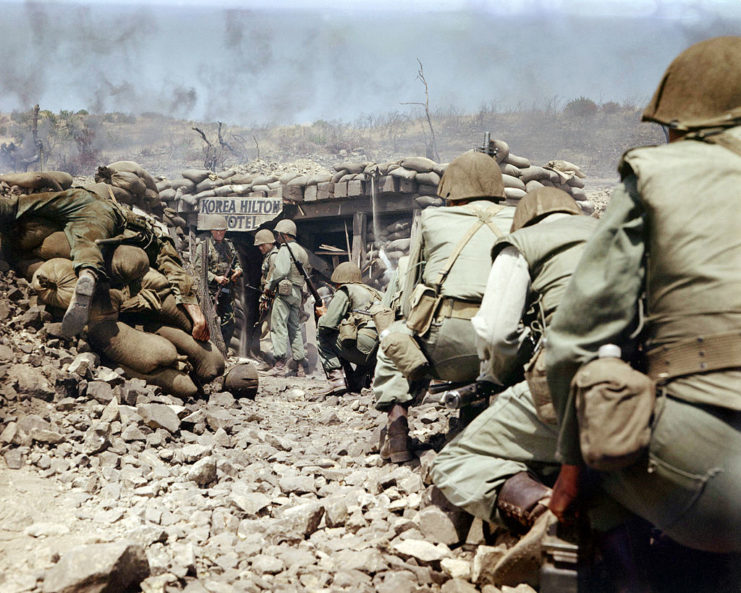
The next two days consisted of both sides launching attacks and counterattacks. A large portion of both PVA divisions were involved, as were five battalions from the 17th and 32nd Infantry Regiments.
The decision is made to abandon Pork Chop Hill
The commander of the US I Corps decided on the morning of July 11, 1953, that they would abandon Pork Chop Hill. This was due to the incoming armistice decision, the fact the PVA wasn’t letting up in its attacks, and that there wasn’t much to save at the outpost.

While confused, the American troops were relieved to be leaving. However, they had much to consider before evacuating. The first was how they would pull off the maneuver without informing the Chinese of their intentions. They also had to decide in what condition they would leave Pork Chop Hill.
The decision was made to litter the hill with boobytraps laid down by the 13th Engineers. To help them pull out, they enlisted armored personnel carriers and tanks with the 73rd Tank Battalion. The plan worked, and the Americans were able to leave without losing a single soldier.
When the Chinese began climbing the hill, the US forces opened fire with thousands of proximity-fused rounds. Paired with the booby-traps, bombs dropped by UN aircraft, and a well-timed explosion, the bunkers, and trenches were destroyed.
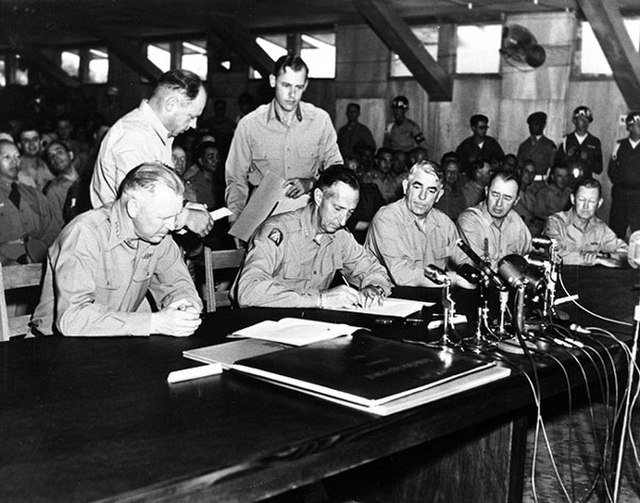
On July 27, 1953, the Korean Armistice Agreement was signed, ending the war. While negotiations were contentious at times, the resulting agreement ensured South Korea remained free.
